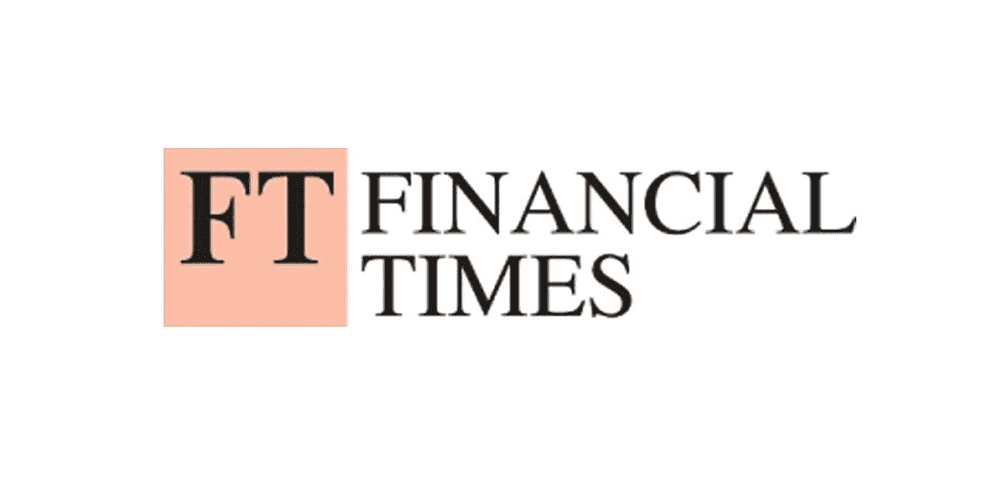A balance transfer card allows you to move debt from existing credit cards to a new one, typically at 0% interest. By pausing interest charges, your repayments go entirely towards reducing the actual balance rather than paying the bank. This helps you clear debt faster while saving money on interest.
Compare our best credit cards
Find the credit card that works for you

Check your eligibility and compare credit cards

What is a credit card?
A credit card allows you to borrow money from a financial institution or credit provider to make purchases or pay for services, up to a certain limit, known as your credit limit. Unlike debit cards, which withdraw money directly from your bank account, a credit card gives you access to a line of credit, essentially lending you money that you agree to pay back.
Each month, you're required to make at least a minimum repayment, but you can choose to pay more or even pay off the full balance if you prefer. The amount you borrow can be repaid over time, offering you flexibility in managing your finances. If you carry a balance beyond the due date, you’ll typically incur interest charges, which can be quite high.
Credit cards can be used for everyday purchases or larger expenses, and they often come with rewards, benefits, and protections for your purchases. However, it’s important to manage your spending and repayments carefully to avoid accumulating debt and paying high interest rates.
How do credit cards work?
Credit cards work by linking the physical card, or account number for online spending, with the borrowing facility - that means when you pay with a card, it's your provider that pays the cash to the merchant.
As you use your credit card, you'll build a balance of debt that you owe to the provider. Every month you're expected to repay the debt that you've accrued by using your credit card.
Here you have some options:
You could pay off the whole balance in full, taking your balance to zero. Doing this ensures that you won't be charged interest on balance you had built up.
You could choose to pay off a part of the balance, and roll over the remaining balance into the next month's billing cycle. Here you'll be charged interest on the remaining balance, which will be added to next month's balance.
You could pay just the minimum monthly payment, which is the minimum amount your provider expects you to repay every month. Sometimes that's a flat charge, but usually it's a percentage of your balance. Making this payment is vital, as missing it will hurt your credit score.
How do lenders assess your eligibility for a credit card?
To be eligible for a credit card in the UK, you must be:
At least 18 years old
a legal UK resident
The first decision providers make is whether to offer a credit card at all. Then they figure out how much to let you borrow - your credit limit - and at what interest rate - the APR.
For this they consider three factors:
Your income: You'll need to provide details about your salary and any other regular income you get from other sources.
Your credit score: The lender will carry out a hard credit check to find out how responsible you've been in paying off credit in the past. This will leave a mark on your credit file and may possibly affect your credit score temporarily.
Existing debt: Providers want to know how much debt you already have to see if you can afford to take on more debt and repay it.
How to choose the best credit card for you
If you need to pay off debt...
If you already have existing credit card debt on one or more cards and want to pay it off at a lower cost, then you should consider a balance transfer credit card. These cards allow you to move your debt from your current card(s) to a new one and pay it off at 0% interest for up to 35 months, though most charge a fee to transfer your balance.
If you need to make a large purchase...
If you're planning to make a large purchase such as furniture for your home and can't afford to pay for it in one go, then you should consider a 0% purchase card, or a 0% money transfer card. These offer long interest free periods so you can split the cost into monthly instalments without paying any interest. Make sure to pay at least the minimum payment every month, and pay off the whole balance before the 0% interest period ends, otherwise you'll be charged interest on the remaining balance.
If you have bad credit...
If you have never taken out credit before, or have a low credit score that you want to improve, then you could consider a credit building credit card. These cards are easier to get approved for and typically charge higher interest rates and have low credit limits. They are best used for everyday spending, with the balance being paid off in full every month. If you keep that up for six months or more, you should see your credit score get a boost.
If you want to earn rewards...
If you want to earn rewards on your spending, there are different kinds of rewards credit cards available depending on what you want. Some cards offer air miles or points that can go towards lowering the cost of your air travel. Other cards offer points that you can collect to earn discounts at the stores you like to shop from. With cashback cards you'll earn cash that your provider may give you directly, either on a monthly or annual basis.
Be aware that rewards cards charge high interest rates and often come with annual fees. So they only make financial sense if you typically pay off your full balance every month, and you earn more in rewards than you pay for the annual fee of the card.
Types of credit cards
![Balance transfer]()
Balance transfer

A balance transfer card allows you to move debt from existing credit cards to a new one, typically at 0% interest. By pausing interest charges, your repayments go entirely towards reducing the actual balance rather than paying the bank. This helps you clear debt faster while saving money on interest.
![0% purchase cards]()
0% purchase cards

A 0% purchase card allows you to make purchases without paying interest for a fixed introductory period. This is designed to help you buy big-ticket items now and spread the cost over several months. As long as you clear the full balance before the 0% deal expires, you won't pay any interest.
![Money transfer cards]()
Money transfer cards

A money transfer card allows you to move funds from your credit limit directly into your bank account. This gives you the flexibility to pay for things that don't accept credit cards — like certain bills or tradespeople — using cash. Most offer a 0% interest period, allowing you to borrow the money now and spread the repayment cost over several months.
![Credit building cards]()
Credit building cards

A credit builder card is designed for those with a poor credit score or limited borrowing history. These cards are easier to be approved for, though they typically come with higher interest rates and lower limits. By managing the card responsibly and paying on time, you can prove your reliability and boost your credit rating.
![Travel credit cards]()
Travel credit cards

A travel credit card is designed to reduce costs for frequent travellers and holidaymakers. Unlike standard cards, these typically charge no foreign transaction fees when you spend abroad. This saves you from paying extra charges on every transaction, allowing your holiday money to go further.
![Rewards cards]()
Rewards cards

A rewards credit card gives you something back every time you spend. Depending on the card, you can earn cashback, air miles, or loyalty points to spend at your favourite retailers. These perks are best suited for those who clear their balance in full each month, as high interest rates or annual fees can otherwise outweigh the value of your rewards.
Types of credit cards
Balance transfer
0% purchase cards
A 0% purchase card allows you to make purchases without paying interest for a fixed introductory period. This is designed to help you buy big-ticket items now and spread the cost over several months. As long as you clear the full balance before the 0% deal expires, you won't pay any interest.
Money transfer cards
A money transfer card allows you to move funds from your credit limit directly into your bank account. This gives you the flexibility to pay for things that don't accept credit cards — like certain bills or tradespeople — using cash. Most offer a 0% interest period, allowing you to borrow the money now and spread the repayment cost over several months.
Credit building cards
A credit builder card is designed for those with a poor credit score or limited borrowing history. These cards are easier to be approved for, though they typically come with higher interest rates and lower limits. By managing the card responsibly and paying on time, you can prove your reliability and boost your credit rating.
Travel credit cards
A travel credit card is designed to reduce costs for frequent travellers and holidaymakers. Unlike standard cards, these typically charge no foreign transaction fees when you spend abroad. This saves you from paying extra charges on every transaction, allowing your holiday money to go further.
Rewards cards
A rewards credit card gives you something back every time you spend. Depending on the card, you can earn cashback, air miles, or loyalty points to spend at your favourite retailers. These perks are best suited for those who clear their balance in full each month, as high interest rates or annual fees can otherwise outweigh the value of your rewards.
How to compare credit cards in four steps
Decide the type of card you need
The reason you're looking for a credit card will help you decide which type of card you should compare. Different types of cards are designed for specific purposes, whether you want to pay off debt, make a large purchase, build your credit score, or earn rewards. Be sure about why you want a credit card before you do comparison.
Compare interest rates
The interest rate or APR, determines how much it'll cost you to borrow with your credit card. if you're more likely to carry a balance, you’ll want the card with the lowest APR you can get – even generous rewards won't make up for the interest accrued with a high APR.
Check fees and charges
Most credit cards also charge common fees such as annual fees, balance transfer fees, cash advance fees, foreign transaction fees, and others. Whether these fees will affect you depends on how you use your credit card. For example, if you don’t plan to do a balance transfer, you could consider a card that charges extra for that. Or, if you plan to do a lot of international traveling, a no foreign transaction fee credit card might be a better choice.
Compare extra benefits
Many credit cards may offer additional benefits like rental car insurance, airport lounge access, and roadside assistance, to name a few. But it’s not uncommon for extra benefits to come with a higher annual fee. When comparing a credit card’s extra benefits, consider your needs. Free airport lounge access sounds great, but it might not be worth it if you're only traveling once or twice a year.
How to apply for a credit card online
Check your credit score – Review your credit file first. If your score is low, you may want to improve it before applying to access better rates.
Check your eligibility – Use an eligibility checker before making a formal application. This runs a "soft check" that tells you your likelihood of approval without hurting your credit score.
Compare the costs – Read the terms and conditions carefully — specifically the representative APR and any annual fees — to ensure the card is affordable.
Prepare your documents – You will generally need to provide your employment details, annual salary, and three years of address history.
Submit your application – Enter your details accurately. Inconsistencies (like a typo in your address) can lead to rejection.
Receive a decision – Most online applications give an instant decision on your screen. However, some cases are referred for manual checks, which can take a few working days.

Check your eligibility and compare credit cards

Golden rules for using your credit card
Never miss a monthly payment
Missing a payment could mean you lose any benefits the cards have - such as an interest-free period. You'll get a black mark on your credit report that lasts for years and also be stung with a late payment fee.
Have a plan to clear your balance
If you have a 0% credit card, paying the minimum each month sounds convenient. But, the problem arises when that 0% period runs out. At that point, you'll be charged the full APR on any remaining balance you have on the card. So make sure you know exactly when that is, and either have the funds lined up to clear it in full or a new 0% card waiting.
If you're in it for rewards, pay in full
Cash back, air miles, supermarket loyalty points, access to events and airport lounges - there are plenty of perks available if you spend money with the right card. But, if you're in it for the rewards, always clear your balance in full. Because interest charged on money you've let carry over from one month to the next can quickly wipe out the value of the perk
Used responsibly, bigger credit limits are better
Banks judge you, in part, based on how much of your credit limit you use. Oddly, that means someone who's used £3,000 of a £4,000 limit has a worse score than someone who's used £3,000 of a £10,000 limit. Also, the best scores are reserved for people whose banks trust them with big limits. Just be careful not to use the full amount unless you can afford to repay it.
Withdrawing cash will cost you
Not all credit card transactions are equal - in fact a whole string of them cost you more. These are known as cash advances, or cash like transactions, and will see you charged interest from the second you make the purchase, quite possibly at a higher APR than normal, and maybe a fee on top.
Don't apply for cards too often
If you are rejected after applying for a credit card, don't try to get another one straight away. Making several applications over a short period can make it seem that you're desperate for credit, which is a red flag for lenders. Wait at least six months before applying again.
Golden rules for using your credit card
Never miss a monthly payment
Missing a payment could mean you lose any benefits the cards have - such as an interest-free period. You'll get a black mark on your credit report that lasts for years and also be stung with a late payment fee.
Have a plan to clear your balance
If you have a 0% credit card, paying the minimum each month sounds convenient. But, the problem arises when that 0% period runs out. At that point, you'll be charged the full APR on any remaining balance you have on the card. So make sure you know exactly when that is, and either have the funds lined up to clear it in full or a new 0% card waiting.
If you're in it for rewards, pay in full
Cash back, air miles, supermarket loyalty points, access to events and airport lounges - there are plenty of perks available if you spend money with the right card. But, if you're in it for the rewards, always clear your balance in full. Because interest charged on money you've let carry over from one month to the next can quickly wipe out the value of the perk
Used responsibly, bigger credit limits are better
Banks judge you, in part, based on how much of your credit limit you use. Oddly, that means someone who's used £3,000 of a £4,000 limit has a worse score than someone who's used £3,000 of a £10,000 limit. Also, the best scores are reserved for people whose banks trust them with big limits. Just be careful not to use the full amount unless you can afford to repay it.
Withdrawing cash will cost you
Not all credit card transactions are equal - in fact a whole string of them cost you more. These are known as cash advances, or cash like transactions, and will see you charged interest from the second you make the purchase, quite possibly at a higher APR than normal, and maybe a fee on top.
Don't apply for cards too often
If you are rejected after applying for a credit card, don't try to get another one straight away. Making several applications over a short period can make it seem that you're desperate for credit, which is a red flag for lenders. Wait at least six months before applying again.
The benefits and drawbacks of credit cards
The benefits
Purchase protection: Under Section 75 of the Consumer Credit Act, purchases made between £100 and £30,000 are protected. If the company goes bust or the goods are faulty, the card provider can reimburse you.
Build credit history: Using a card responsibly and paying it off on time proves to lenders that you are reliable. This can boost your credit score and help you get a mortgage or loan in the future.
Interest-free borrowing: If you pay your balance in full every month, you can borrow money for up to 56 days without paying a penny in interest.
Rewards and perks: Many cards offer cashback, air miles, or loyalty points on your spending, giving you extra value on purchases you would make anyway.
The drawbacks
Interest costs: If you don't clear your balance every month, credit cards can be an expensive way to borrow. Interest compounds, meaning you pay interest on your interest.
Risk of debt: It is easy to spend money you don't have. If you only make the minimum repayment each month, it can take years to clear a balance and cost you hundreds in interest.
Fees: Watch out for "hidden" costs. You may be charged for missed payments, exceeding your credit limit, withdrawing cash from an ATM, or using the card abroad.
Credit score damage: Just as good usage builds your score, missed payments or maxing out your limit can significantly damage your credit rating.
Jargon buster
Annual fee
The fixed cost associated with maintaining certain credit card accounts. It appears as a single lump sum on your statement once a year. This is a standard account charge and is separate from interest payments or transaction fees.
APR
APR stands for “Annual Percentage Rate” and is the total cost of borrowing over 12 months. If you pay your balance in full and on time, you will not pay interest.
Balance
The total figure outstanding on your account at any given time. It combines your borrowing — used for purchases or transfers — with any account fees or interest charges. If this amount is not paid off in full, it is carried over as debt.
Cash withdrawal
Withdrawing funds from an ATM using your credit card. This attracts a specific fee and daily interest charged from the moment you take the money out. Be aware that providers often apply these same expensive rules to "cash-like" transactions — such as buying foreign currency, stocks, or placing bets — categorising them exactly the same as an ATM withdrawal.
Credit limit
Your credit limit is the amount you can borrow on your credit card at any one time. If you exceed this amount, you can be charged a fee — typically £12 — and it can leave a mark on your credit report. You won’t usually find out your credit limit until the end of an application process, although you can ask your provider to increase — or decrease — your credit limit at any time.
Credit limits are set based on your credit history and your earnings. Once you've reached your credit limit, you need to make a payment to bring down your balance before you can use the card again. Find out more in our guide to credit limits.
Credit report
Your credit report is your history of borrowing and paying bills over the past six years. Lenders send this information to one or more of the three credit reference agencies, which compile reports on UK residents.
Before deciding whether to let someone borrow, lenders check your report from one or more of the agencies. You can request a copy of your credit reports to ensure there are no mistakes on your file, request changes if you spot one and add notes explaining any missed payments.
Credit score
Your credit score is calculated based on your credit history. Each credit reference agency has its own method of calculating this. Your credit score will go up for things like making payments on time and down for things like being late or defaulting on a loan. Typically, the higher your score, the more likely you are to be offered a lower rate of interest or higher credit limit.
There is no absolute pass or fail mark attached to a credit score, with each lender making its own decision on what it considers acceptable.
Default
This occurs when the relationship between you and the lender has broken down due to unpaid debt. It typically happens after 3-6 months of missed payments. You will receive a warning letter 14 days prior; if you do not pay, the account is defaulted. This blocks you from using the card and significantly damages your credit rating for six years.
Direct Debit
An automated payment method where you authorise a company to collect money from your bank account. It is the most common way to pay credit card bills because it ensures you never miss a due date. You can set it up to collect the minimum payment, a fixed amount, or the full balance every month.
Eligibility criteria
The minimum standards you need to satisfy before a provider will consider your application. This typically involves your age, employment status, and salary. You should check these carefully before applying to avoid unnecessary rejections, though meeting them does not automatically guarantee you will get the card.
Foreign transaction fees
The extra cost added to purchases made in a foreign currency. Standard credit cards typically add a fee of around 2.75% to 2.99% to the exchange rate set by Visa, Mastercard, or Amex. Some specialist travel credit cards waive these fees, though you should still avoid withdrawing cash as this usually attracts interest immediately.
Interest-free credit
Interest-free credit cards allow you to either transfer a balance, make purchases or transfer cash to a current account without paying any interest on your balance for a set period. However, you must keep making at least the minimum monthly repayment during this time.
Once the 0% deal is over, you will be charged interest on any remaining debt at your standard APR. With balance transfers and money transfers, you will usually have to pay a transfer fee.
Minimum monthly repayment
This is the smallest sum accepted by your provider to keep your account active without penalties. It is calculated based on a small percentage of your total balance (or a fixed sum like £5 if the balance is low). While paying the minimum stops you from defaulting, it does not clear your debt efficiently. We recommend paying as much as you can afford to minimise interest costs.
Transfer fee
A fee charged by providers for the service of moving debt. This is added to your account balance automatically when the transfer goes through. Fees typically range from 1% to 3.5% for balance transfers, but you should expect to pay slightly more — usually between 3% and 5% — for money transfers.
Watch our video on credit cards made simple
FAQs
What is APR?
The annual percentage rate (APR) is the interest rate at which you will borrow money on your credit card. It's typically stated as a yearly interest rate and includes any fees and costs associated with the card. In most cases, you can avoid paying interest by clearing your credit card balance each month.
What credit limit and interest rate will I get?
The specific rate and limit you are offered depend on your credit score and financial circumstances. The representative APR you see advertised is the rate offered to at least 51% of successful applicants; however, if you have a lower credit score, you may be offered a higher rate.
Similarly, your credit limit is personal to you; it is calculated based on your income and how much debt you already have. You will typically find out your exact offer after a successful eligibility check or application.
How long does it take to receive my card?
In the UK, most credit cards arrive within 7 to 10 working days after your application is approved. For security reasons, your PIN will be sent separately and usually arrives a few days before or after the card. Some providers may grant you instant access to a digital version of your card via their app while you wait for the physical one to arrive.
Can I get a joint credit card?
Unlike joint current accounts, there is no such thing as joint account for credit cards. What you can do is add an additional card holder to your card, such a partner, child or parent. This means that the additional card holder will have their own separate card, but you will be responsible for any debt accumulated on that card.
Can I withdraw an application for a credit card?
Yes. Most cards have a 14-day cooling off period that starts from the day you receive the card. If you change your mind about the card during that time, you can return it to the provider. While there is no penalty fee, you do have to pay off any balance you may have accrued on the card within 30 days.
What happens if my credit card application is rejected?
If your credit card application is rejected, avoid applying right away with a different provider. The best thing to do is to wait at least six months before you apply again.
But if you urgently need access to credit, you could opt for a credit card for bad credit, which will have more lenient eligibility requirements.
What happens if I miss a repayment?
If you miss a repayment on your credit card, you're most likely going to be charged a penalty and lose any introductory benefits, such as an interest free offer. It will also go on your credit report as a negative mark and hurt your credit score.
How do I check my credit score?
You can check your credit score by using a credit reference agency. These are companies that collect information about your credit behaviour to determine your credit score. Experian, Equifax and Transunion are the three main credit agencies in the UK. Read more about it in our guide on how to check your credit rating
Didn’t find what you were looking for?
Below you can find a list of our most popular credit cards:
Everything you need to gain credit for…

Very fast and efficient. From start to finish it was easy to follow the application.

Great website













